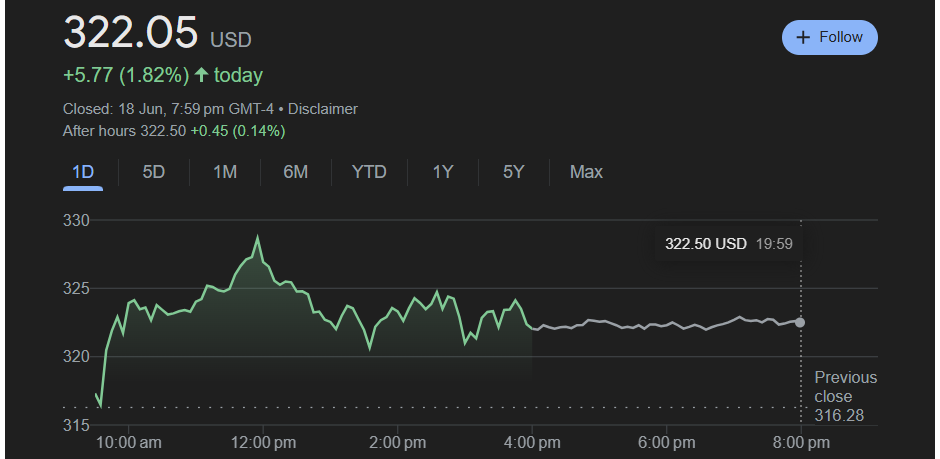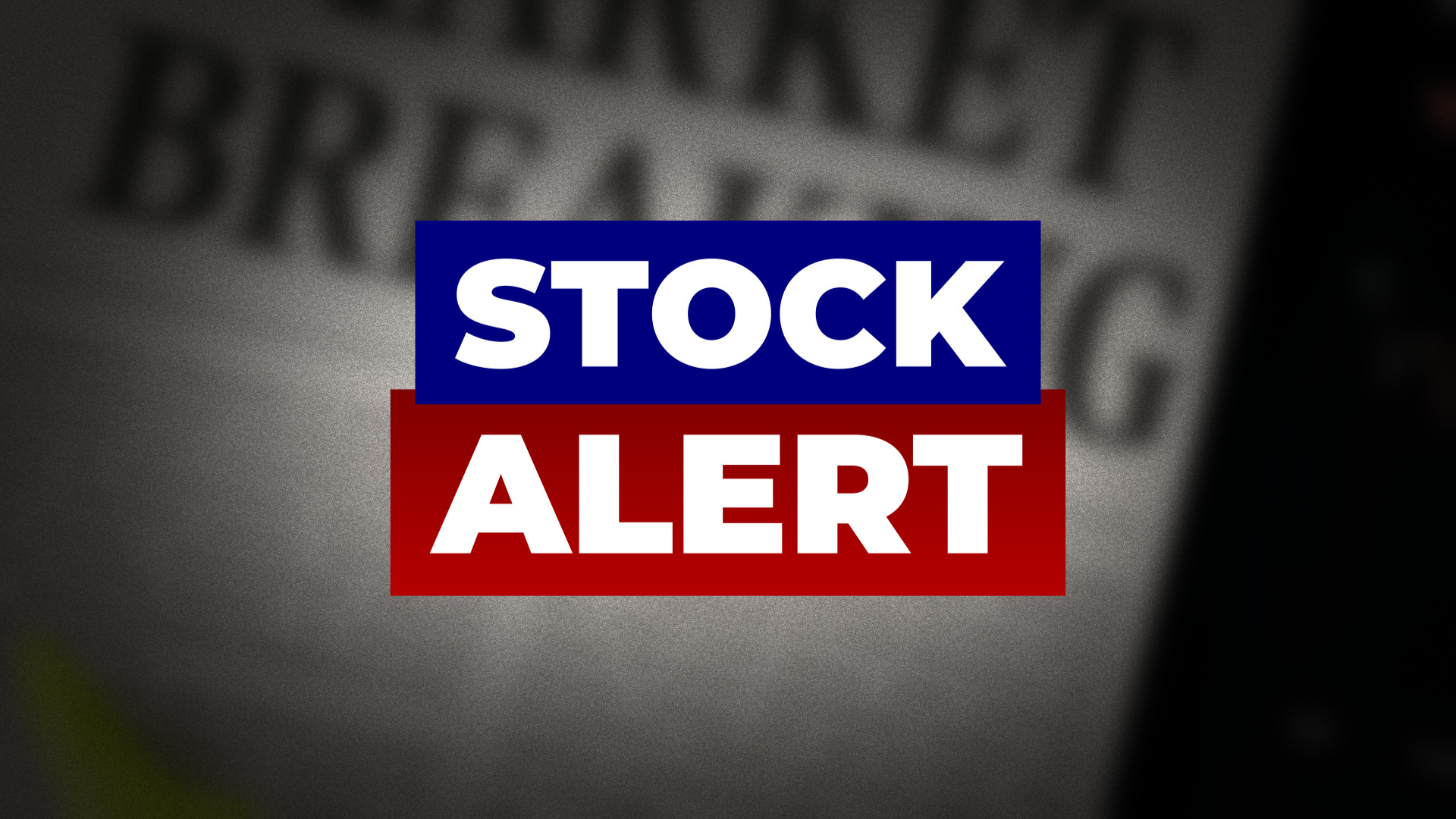On June 18, 2025, Tesla Inc. (NASDAQ: TSLA) closed at $322.05, up 1.80% ($5.77) from the prior close of $316.28, with after-hours trading reaching $322.50 (+0.14%). The stock opened at $317.31 and traded between $315.45 and $329.32.

The gain reflects tech sector momentum and sustained electric vehicle (EV) demand, with no major Tesla-specific news reported on June 18.
Performance Breakdown
Tesla’s stock shows varied returns, with a strong 381.63% gain over five years but declines in shorter periods. Below is a performance summary as of June 20, 2025:
| Time Period | Price Change |
|---|---|
| 5 Days | -0.32% |
| 1 Month | -4.24% |
| 6 Months | -24.31% |
| YTD | -17.44% |
| 1 Year | +72.63% |
| 5 Years | +381.63% |
| All-Time | +25,330%* |
Note: The all-time return accounts for stock splits (5-for-1 in 2020, 3-for-1 in 2022). From Tesla’s IPO price of ~$1.13 (split-adjusted), this reflects its historical growth.
Despite a 72.63% 1-year gain, Tesla underperforms the Nasdaq index’s ~12.8% 6-month and ~9.3% YTD returns in those periods. The 5-year return (381.63%) highlights long-term growth, though recent volatility reflects corrections from a 52-week high of $488.54.
SpaceX Impact on Tesla Share Returns
SpaceX, a privately held company led by CEO Elon Musk, has no direct financial tie to Tesla’s share price. However, Musk’s leadership of both companies can influence investor sentiment, particularly during high-profile SpaceX events.
On June 18, 2025, SpaceX’s Starship prototype (Ship 36) exploded during a static fire test at its Starbase facility in Texas, just before 11 p.m. CT, marking the fourth major failure for the program in 2025. The explosion, attributed to a possible failure of a pressurized tank (COPV) in the rocket’s nosecone, caused no injuries but delayed SpaceX’s 10th test flight scheduled for June 29.
Social media posts and news reports suggest this setback, combined with earlier Starship failures in 2025, may dent investor confidence in Musk’s ventures, including Tesla.
For instance, a 14% Tesla stock drop on June 5, 2025, erasing $152 billion in market cap, was linked to Musk’s political disputes rather than SpaceX directly. As U.S. markets were closed on June 19 for Juneteenth, any market reaction to the explosion may be reflected in trading on June 20.
Key Financial Metrics for June 2025
Tesla’s market capitalization was $1.01 trillion on June 18, 2025, based on ~3.19 billion shares and a $322.05 price.
Trailing twelve-month earnings per share (EPS) was $4.37, yielding a price-to-earnings (P/E) ratio of ~73.7, reflecting a premium valuation.
The 52-week range was $179.66–$488.54, with a beta of 2.06, indicating high volatility.
Tesla does not pay dividends.
The next earnings report, due July 29, 2025, will focus on deliveries and margins.
Technical Analysis for 20 June, 2025

Tesla’s stock is range-bound, with major support at $315–$318 and resistance at $337–$340. On June 18, it closed above support ($315) and the 50-day moving average, signaling short-term bullish momentum.
If Tesla holds above $325, it may test resistance at $337–$340, potentially driven by EV sector optimism. A drop below $315–$318 could signal bearish momentum toward $300.
The 52-week high ($488.54) suggests recovery potential. Social media sentiment supports a bullish setup above $325, targeting $330–$335.
Catalysts and Market Context
No Tesla-specific news emerged recently, but the Nasdaq rose 0.8%, and EV peers (Rivian, Lucid) saw smaller gains, reflecting sector strength. Stable inflation and EV demand bolstered sentiment.
In early June, Musk mentioned a potential lithium supplier partnership, but no deal is confirmed. On June 20, Tesla’s robotaxi launch plans in Austin, delayed by Texas safety regulations, may affect sentiment, though no immediate impact is clear.
Sector Performance
Tesla’s 1.80% gain on June 18 outpaced the Nasdaq’s 0.8% rise, driven by EV and tech sector momentum. Check peer performance with market data for precise comparisons.
Forward-Looking Outlook
Analysts are split on Tesla’s near-term outlook. Bulls highlight robotaxi plans, new models, and market leadership, while bears point to high valuation, declining sales in Europe/China, and macro risks like tariffs.
Q2 earnings on July 29, 2025, will focus on delivery numbers, margins, and Cybercab updates, likely driving volatility.
This article is for informational purposes only and not financial advice. Investing in stocks carries risks, including potential loss of principal. Conduct independent research or consult a financial advisor before investing. Data is sourced from public financial platforms and social media, but markets can shift rapidly. The author and publisher are not liable for errors, omissions, or losses from actions based on this article. Verify data with primary sources (e.g., market exchanges, Tesla’s investor relations) before acting.
Dawson Blake is a financial markets expert with over 10 years of experience, focusing mainly on stock market news and price movements. He aims to become a top-tier authority in curating stock news content that readers can trust as their go-to source for market information. Dawson enjoys breaking down market activity, company updates, and daily trends to help investors stay informed and make smarter financial decisions. His writing is simple, clear, and designed to make the stock market easy to follow for everyone.

